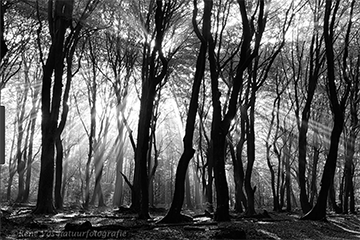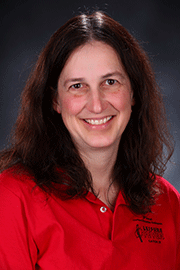Bulletin News

02/07/2019
Where older generations see the great outdoors as a place of beauty, peacefulness and recreation, many youth instead experience the wilderness as more “Blair Witch Project” or “Zombie Apocalypse” than paradise on earth.
“Yes, I went outside to look for the scary clowns,” admitted one SUNY Cortland undergraduate, regarding the online hoax several years ago involving reported sightings of the costumed menace in cemeteries around the nation.
Sharon Todd, a SUNY Cortland professor of recreation, parks and leisure studies, plans to explore how current generations, who seem to be spending less and less of their childhood outside, perceive wilderness environments, during a lecture on Wednesday, Feb. 27, at the College.
Titled “Scared to Death? Changes in College Students’ Fear and Anxiety in Wilderness Environments Over Time,” Todd’s talk will explore changes over roughly the last 20 years in college students’ fears of the outdoors.

The lecture will begin at 4:30 p.m. in Moffett Center, Room 2125. A reception to welcome her will precede the lecture across the hall at 4 p.m. in the Rozanne M. Brooks Museum, Moffett Center, Room 2126.
The talk continues the College’s 2018-19 Rozanne M. Brooks Lecture Series on the theme of “The Culture of Death,” which explores the anxieties felt in some cultures, contextualizing them in the 21st century Western experience. The series events are free and open to the public.
Today’s world has many more Little Red Riding Hoods, or so it seems.
Todd’s talk encompasses research in 1989 and in 2018, when participants’ levels of social and physical anxieties were measured before, during and after a two-week outdoor education practicum in the Adirondack Park.
Historically, wilderness symbolized “wild” places to be feared or conquered, but eventually became associated with beautiful, pristine, cherished areas, according to Todd.
Now the outdoors to many college students represents a scary, unknown realm.
“How do their levels of perceived fear compare?” said Todd, who earned a Ph.D. in leisure studies from The Pennsylvania State University. “What insights can we gain to better facilitate college students’ wilderness experiences?”
Two more Brooks series lectures will take place this semester.
Janis Whitlock, associate director of Cornell University’s Bronfenbreanner Center for Translational Research, will address how current youth use self-injury to speak and how it serves as a cultural emblem of the age, on March 13. Her discussion is titled “My Blood in Between Heaven and Earth: Self-injury and the Embodied Language of Pain, Power and Vulnerability.”
On April 3, a Spanish language and culture specialist from University at Albany will give a talk on “Newfangled Vampires and Zombies in Latin American Literature and Film.” Carmen Serrano, an assistant professor of Spanish, has studied how vampire and zombie figures have inspired Latin American films since the 1950s.
The “Culture of Death” series talks all take place on Wednesdays and begin at 4:30 p.m. in Moffett Center, Room 2125. Before each lecture, a reception to welcome the speaker will start at 4 p.m. in the Rozanne M. Brooks Museum, Moffett Center, Room 2126. The Brooks lectures and receptions are free and open to the public.
Although inevitable and therefore of interest to all humans, cultures view the end of life differently, many as the doorway to another, sometimes better, existence. In the West however, death is viewed more often as something to be feared and avoided as long as possible.
The 2018-19 Brooks Lecture Series is sponsored by a grant from Auxiliary Services Corporation (ASC) and the Cortland College Foundation. For more information, contact Brooks Museum director Sharon Steadman, a SUNY Cortland professor of sociology/anthropology, at 607-753-2308.

